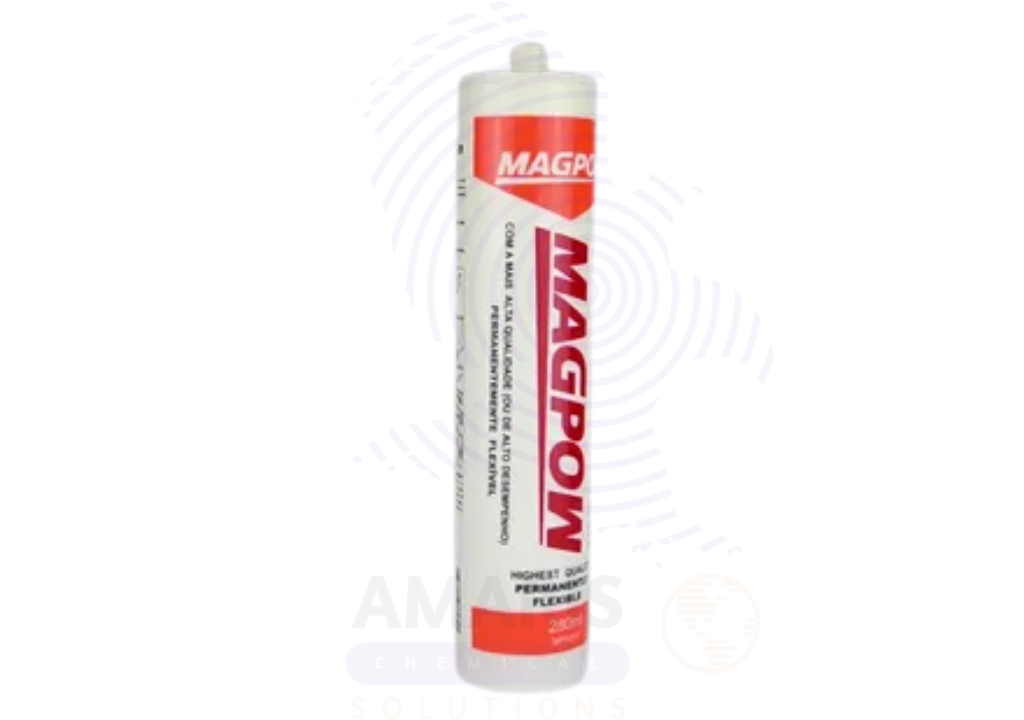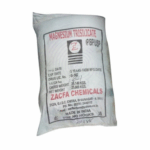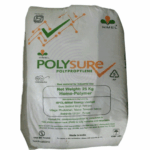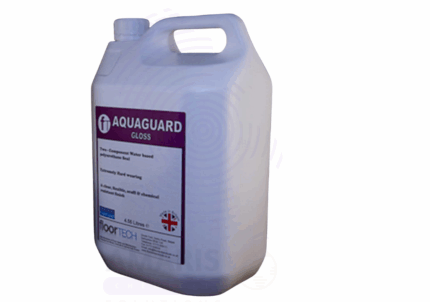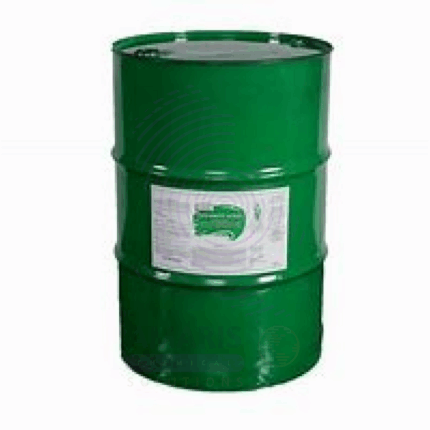Magpow Silicone Sealant
Whatsapp Order
Magpow Silicone Sealant is a one-component, moisture-curing silicone-based sealant formulated for high-performance sealing, bonding, and insulating applications. It cures at room temperature when exposed to air moisture, forming a durable, flexible rubber-like elastomer. It adheres well to glass, metal, ceramic, plastic, and many construction materials. Commonly used in general construction, glazing, automotive, and household repair applications, Magpow Silicone Sealant offers excellent resistance to weathering, UV radiation, moisture, and temperature extremes.
Description
Table of Contents
Toggle
Magpow Silicone Sealant
Primary Uses
- Construction & Building Industry
- Glass & Window Sealing: Used for sealing glass panels, windows, skylights, and curtain walls.
- Joint Sealing: Seals expansion joints, movement joints, and control joints in concrete and masonry structures.
- Weatherproofing: Applied around door frames, window perimeters, and building exteriors to prevent air and water infiltration.
- Roofing Applications: Seals roof penetrations and flashings to prevent leaks.
- Automotive Industry
- Windshield & Body Sealing: Used for sealing vehicle windshields, lights, and body seams.
- Gasket Forming: Acts as a flexible, heat-resistant gasket in engine and mechanical parts.
- Vibration Dampening: Absorbs vibrations and provides cushioning in vehicle interiors.
- Household & DIY Applications
- Bathroom & Kitchen Sealing: Used to seal sinks, bathtubs, showers, countertops, and backsplashes against water intrusion.
- Appliance Repair: Seals gaps or cracks in household appliances.
- Glass Repairs: Bonds and seals glass surfaces in home décor or fixtures.
- Electrical & Electronics Industry
- Insulating Compound: Provides electrical insulation and protects components from moisture and dust.
- Potting Material: Used for potting electronic assemblies to shield from vibration and contaminants.
Secondary Uses
- Marine & RV Industry
- Used to seal boat hatches, portholes, and vehicle joints in marine and recreational vehicles to prevent water intrusion.
- HVAC Industry
- Seals ductwork, joints, and pipe penetrations for thermal insulation and air-tightness.
- Art & Craft / Model Making
- Employed as a mold-making material or adhesive in DIY and crafting applications due to its flexibility and adhesion.
KEY PRODUCT FEATURES
1. Basic Identification Attributes
- Chemical Name (IUPAC): Polydimethylsiloxane (main component)
- Common/Trade Name: Magpow Silicone Sealant
- CAS Number: Mixture (main component CAS: 63148-62-9)
- HS Code: 3214.10.10
- Synonyms: Silicone caulk; Silicone adhesive sealant; RTV silicone sealant
2. Physical & Chemical Properties
- Physical State: Paste (semi-solid)
- Color & Odor: Commonly clear, white, black, or grey; slight vinegar or alcohol-like odor (depending on type)
- Curing Mechanism: Moisture-cure; forms elastomeric solid upon curing
- Skin Formation Time: 5–20 minutes (varies by humidity and temperature)
- Full Cure Time: 24–72 hours (depending on thickness and environment)
- Temperature Resistance: Typically −50 °C to +180 °C (higher for specialized variants)
- Shore A Hardness: ~20–30 (varies by grade)
- Elongation at Break: ≥ 400%
- Tensile Strength: Approx. 1.5 MPa
3. Safety & Hazard Attributes
- GHS Classification: May cause mild skin or eye irritation (depends on formulation: acetic acid or neutral cure types)
- Toxicity: Low toxicity under recommended use conditions
- Exposure Limits: No specific occupational limits; avoid prolonged inhalation of fumes
- Flammability: Not flammable in cured form; uncured product is combustible
4. Storage & Handling Attributes
- Storage Conditions: Store in cool, dry place below 30 °C; protect from direct sunlight and frost
- Container Type: Aluminum tubes, plastic cartridges, or sausage packs
- Shelf Life: Typically 12–18 months from manufacturing date (in unopened packaging)
- Handling Precautions: Avoid skin and eye contact before curing; use in well-ventilated area
5. Regulatory & Compliance Attributes
- Complies with construction and building material standards (e.g., ASTM C920)
- RoHS compliant; free from heavy metals in most consumer-grade products
- REACH registered raw materials
- Labeling includes curing type (acidic or neutral) and appropriate safety instructions
6. Environmental & Health Impact
- Biodegradability: Not readily biodegradable; remains inert in the environment after curing
- Ecotoxicity: Low, but uncured product should not enter waterways
- Bioaccumulation: Not expected to bioaccumulate
- Carcinogenicity/Mutagenicity: Not classified as carcinogenic
SAFETY HANDLING PRECAUTIONS
Safety Handling Precautions
- PPE Required: Gloves and safety goggles recommended during application
- Handling Guidelines: Use in a well-ventilated area; avoid prolonged skin contact with uncured material
- Storage Measures: Keep containers tightly closed; store away from food or incompatible materials (strong oxidizers)
First Aid Measures
- Inhalation: Move to fresh air if vapor causes discomfort
- Skin Contact: Wash with soap and water; cured silicone is non-irritating
- Eye Contact: Rinse thoroughly with water for several minutes; seek medical attention if irritation persists
- Ingestion: Not intended for ingestion; seek medical help if swallowed
Firefighting Measures
- Fire Hazards: Uncured sealant is combustible
- Extinguishing Media: Use dry chemical, foam, or CO₂ for surrounding fire
- Special Precautions: Firefighters should wear self-contained breathing apparatus
- Hazardous Combustion Products: May release carbon oxides and small amounts of formaldehyde during combustion
Related products
Aquaguard
Aquaguard is a brand name commonly associated with water purification products and filtration systems designed to provide safe, clean drinking water. These systems typically use technologies such as UV purification, RO (reverse osmosis), UF (ultrafiltration), and activated carbon filters to remove contaminants including bacteria, viruses, dissolved salts, heavy metals, and suspended particles. Aquaguard products are widely used in residential, commercial, and industrial settings to improve water quality, taste, and safety. The brand encompasses water purifiers, filters, and treatment units tailored to different water sources and purity requirements.
Clear Emulsion
Clear Emulsion is a transparent or translucent mixture of two immiscible liquids—typically oil and water—stabilized by emulsifying agents to form a stable, homogenous system. This product is widely used in cosmetics and personal care, pharmaceuticals, and specialty industrial applications due to its lightweight texture, ease of absorption, and aesthetic appeal. Clear emulsions offer a visually appealing, non-greasy feel with the advantages of both oil and water phases, delivering moisturizing, protective, and active ingredient-carrying benefits. Their clarity distinguishes them from traditional creamy emulsions, making them popular in modern skincare and cosmetic formulations.
Eagle Styrene Acrylic 72/ 50
Eagle Styrene Acrylic 72/ 50 is a co-polymer emulsion consisting of styrene and acrylic monomers, offered at 50% active solids concentration in water. It appears as a milky-white, low-viscosity liquid with a mild odor. This polymer emulsion combines excellent film-forming properties, adhesion, and mechanical strength, making it widely used in coatings, adhesives, sealants, and functional binders across multiple industries.
Lacitex
Lacitex is a high-quality natural latex concentrate derived from Hevea brasiliensis (rubber tree) latex. It is a milky, white colloidal suspension primarily used in the manufacture of latex-based products such as gloves, adhesives, coatings, and foam rubber. Lacitex offers excellent film-forming properties, elasticity, and tensile strength. It provides superior binding, water resistance, and flexibility in finished products, making it widely valued in various industrial and manufacturing applications.
Pro Grip White Mosaic Adhesive Grout
Pro Grip White Mosaic Adhesive Grout is a premium-quality, ready-to-use adhesive and grout designed specifically for mosaic tiles and small-format tile installations. It provides excellent bonding strength, smooth application, and a durable white finish that enhances the appearance of tile joints. The product is resistant to water, mold, and stains, making it ideal for both indoor and outdoor use in areas such as kitchens, bathrooms, swimming pools, and decorative mosaic works.
Sika Anchorfix 1
Sika Anchorfix 1 is a high-performance, two-component, fast-curing adhesive mortar designed for anchoring and fixing applications in concrete and masonry. It provides superior bond strength, chemical resistance, and durability, making it suitable for heavy-duty structural and non-structural fastening tasks. The product is easy to mix and apply, cures rapidly at various temperatures, and complies with international construction standards, ensuring reliable and long-lasting anchoring performance.
Sika Flex 260 Primer
Sika Flex 260 Primer is a high-performance, solvent-based primer designed to enhance adhesion of polyurethane and other elastic sealants on porous and non-porous substrates. It provides excellent bonding on surfaces such as concrete, metal, wood, and various plastics, ensuring durable and long-lasting sealant performance. The fast-drying formula allows for efficient application in construction and industrial sealing projects.
Sika Flex 2c Color Pack
Sika Flex 2c Color Pack is a high-quality, ready-to-use colorant additive designed specifically to tint two-component polyurethane and hybrid sealants and adhesives. It provides consistent, vibrant, and durable colors that enhance the aesthetic appeal and blend seamlessly with construction materials. This color pack is compatible with Sika Flex 2c sealants, enabling customized color matching for joints and sealing applications in construction, automotive, and industrial projects.


 Preservatives(food)
Preservatives(food) Flavor Enhancers
Flavor Enhancers Acidulants
Acidulants Sweeteners
Sweeteners Antioxidants
Antioxidants Colorants(food)
Colorants(food) Nutraceutical Ingredients (food)
Nutraceutical Ingredients (food) Nutrient Supplements
Nutrient Supplements Emulsifiers
Emulsifiers
 Collectors
Collectors Dust Suppressants
Dust Suppressants Explosives and Blasting Agents
Explosives and Blasting Agents Flocculants and Coagulants
Flocculants and Coagulants Frothers
Frothers Leaching Agents
Leaching Agents pH Modifiers
pH Modifiers Precious Metal Extraction Agents
Precious Metal Extraction Agents
 Antioxidants(plastic)
Antioxidants(plastic) Colorants (Pigments, Dyes)
Colorants (Pigments, Dyes) Fillers and Reinforcements
Fillers and Reinforcements Flame Retardants
Flame Retardants Monomers
Monomers Plasticizers
Plasticizers Polymerization Initiators
Polymerization Initiators Stabilizers (UV, Heat)
Stabilizers (UV, Heat)
 Antifoaming Agents
Antifoaming Agents Chelating Agents
Chelating Agents Coagulants and Flocculants
Coagulants and Flocculants Corrosion Inhibitors
Corrosion Inhibitors Disinfectants and Biocides
Disinfectants and Biocides Oxidizing Agents
Oxidizing Agents pH Adjusters
pH Adjusters Scale Inhibitors( water)
Scale Inhibitors( water)
 Antioxidants(cosmetic)
Antioxidants(cosmetic) Emollients
Emollients Fragrances and Essential Oils
Fragrances and Essential Oils Humectants
Humectants Preservatives
Preservatives Surfactants(cosmetic)
Surfactants(cosmetic) Thickeners
Thickeners UV Filters
UV Filters
 Fertilizers
Fertilizers Soil Conditioners
Soil Conditioners Plant Growth Regulators
Plant Growth Regulators Animal Feed Additives
Animal Feed Additives Biostimulants
Biostimulants Pesticides (Herbicides, Insecticides, Fungicides)
Pesticides (Herbicides, Insecticides, Fungicides)
 Active Pharmaceutical Ingredients (APIs)
Active Pharmaceutical Ingredients (APIs) Excipients
Excipients Solvents(pharmaceutical)
Solvents(pharmaceutical) Antibiotics
Antibiotics Antiseptics and Disinfectants
Antiseptics and Disinfectants Vaccine Adjuvants
Vaccine Adjuvants Nutraceutical Ingredients (pharmaceutical)
Nutraceutical Ingredients (pharmaceutical) Analgesics & Antipyretics
Analgesics & Antipyretics
 Analytical Reagents
Analytical Reagents Solvents(lab)
Solvents(lab) Chromatography Chemicals
Chromatography Chemicals Spectroscopy Reagents
Spectroscopy Reagents microbiology-and-cell-culture-reagents
microbiology-and-cell-culture-reagents Molecular Biology Reagents
Molecular Biology Reagents Biochemical Reagents
Biochemical Reagents Inorganic and Organic Standards
Inorganic and Organic Standards Laboratory Safety Chemicals
Laboratory Safety Chemicals Specialty Laboratory Chemicals(Special Laboratory Equipment)
Specialty Laboratory Chemicals(Special Laboratory Equipment)
 Demulsifiers
Demulsifiers Hydraulic Fracturing Fluids
Hydraulic Fracturing Fluids Scale Inhibitors(oil)
Scale Inhibitors(oil) Surfactants(oil)
Surfactants(oil) Drilling Fluids
Drilling Fluids
 Dyes and Pigments
Dyes and Pigments Bleaching Agents
Bleaching Agents Softening Agents
Softening Agents Finishing Agents
Finishing Agents Antistatic Agents
Antistatic Agents
 Admixtures
Admixtures Waterproofing Agents
Waterproofing Agents Sealants and Adhesives
Sealants and Adhesives Curing Compounds
Curing Compounds Concrete Repair Chemicals
Concrete Repair Chemicals Anti-Corrosion Coatings
Anti-Corrosion Coatings
 Surfactants(cleaning)
Surfactants(cleaning) Builders
Builders Enzymes
Enzymes Solvents (Cleaning)
Solvents (Cleaning) Fragrances
Fragrances
 Electronic Chemicals
Electronic Chemicals Catalysts
Catalysts Lubricants
Lubricants Photographic Chemicals
Photographic Chemicals Refrigerants
Refrigerants Automotive chemicals
Automotive chemicals Pyrotechnic Chemicals
Pyrotechnic Chemicals
 Biodegradable Surfactants
Biodegradable Surfactants Bio-based Solvents
Bio-based Solvents Renewable Polymers
Renewable Polymers Carbon Capture Chemicals
Carbon Capture Chemicals Wastewater Treatment Chemicals
Wastewater Treatment Chemicals
 Pigments
Pigments Solvents(paint)
Solvents(paint) Specialty Coatings
Specialty Coatings Binders/Resins
Binders/Resins Additives
Additives Driers
Driers Anti-Corrosion Agents
Anti-Corrosion Agents Functional Coatings
Functional Coatings Application-Specific Coatings
Application-Specific Coatings
 Fresh Herbs
Fresh Herbs Ground Spices
Ground Spices Whole Spices
Whole Spices Spice Blends
Spice Blends Dried Herbs
Dried Herbs
 Leavening Agents
Leavening Agents Dough Conditioners
Dough Conditioners Flour Treatments
Flour Treatments Fat Replacers
Fat Replacers Decoratives
Decoratives Preservatives(baking)
Preservatives(baking)
 Plasticizers & Softeners
Plasticizers & Softeners Reinforcing Agents
Reinforcing Agents Adhesion Promoters
Adhesion Promoters Vulcanizing Agents
Vulcanizing Agents Antidegradants
Antidegradants Blowing Agents
Blowing Agents Fillers & Extenders
Fillers & Extenders Accelerators & Retarders
Accelerators & Retarders